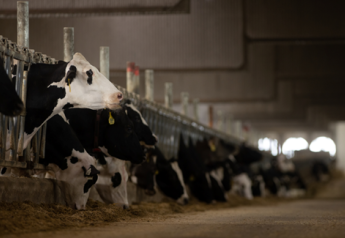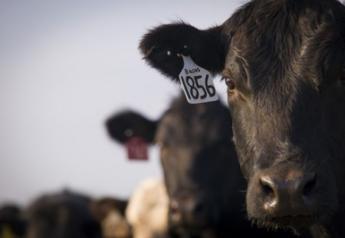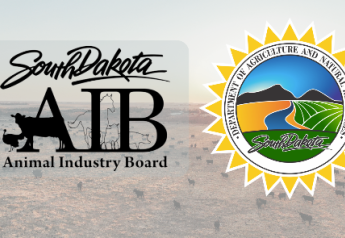Do's and Don'ts for Calf Hernia Repair in the Field

Hernias in young calves can often be addressed surgically in the field. But before taking that step, Amanda Hartnack says it’s important to evaluate whether the case you face is one you can correct with lasting success.
In simple terms, “you need to know when to cut and when to run,” says Hartnack, DVM, MS, DACVS, who spoke on the topic at the 2020 American Association of Bovine Practitioners annual conference.
If you opt for surgery, you want to do it while the problem is new and the calf is young. The reason for that is straightforward.
“When you fix hernias in a young calf, there’s not a lot of weight on the abdomen from the rumen and intestines,” Hartnack explains. “So, you won't have as much tension on your incision; your incision is going to hold a little better, and you're going to end up, generally, with a better outcome.”
The opposite is true as well. Larger animals tend to have larger hernias which are more challenging to address, especially outside the clinic or hospital.
Here are four additional considerations before you opt for surgery in the field:
1. Maybe it's obvious, but take the time to do a thorough physical exam. The reason: at first glance, some abnormalities look like simple hernias but are instead something more complicated to address, such as a Richter’s hernia or an abomasal fistula.
2. Determine whether the hernia is non-reducible. Baird says classically, simple hernias either contain small intestine (enterocele) or omentum (epiplocele) that is easily replaced in the abdominal cavity by depressing the hernia sac. The contents slide with little to no resistance from the hernia sac into the abdomen. When one releases the sac, the contents return readily. He adds that it is important to note the size of the body wall rent when the hernia is reduced. (Baird offers a detailed perspective in his article available at https://bit.ly/2XlcyWZ)
3. Evaluate whether infected umbilical structures are present. If so, in these scenarios, the hernia often requires more intensive surgery than what you may be able to accomplish in the field.
“You might also end up in a situation where you need to do more than your field anesthesia allows you to do,” Hartnack notes. For an in-field anesthesia, she typically opts for sedation with a local block or epidural.
4. Consider the size of the hernia. Most simple hernias successfully treated in the field will be no more than 4 to 5 centimeters (three fingers in size) and have a hernia ring that appears thick and easily palpated, says Aubrey N. Baird, DVM, DACVS, Purdue University.
Hartnack adds that she recommends not addressing hernias in the field that are larger than 10 to 15 centimeters.
“This depends on what you feel comfortable with,” she says. “I do recommend that you run away from hernias that have previously been repaired. Refer them or tell the rancher to consider culling that animal. It is important to consider that hernias may be heritable as well.”
When hernias are less than 5 centimeters in diameter, Hartnack says she considers using abdominal support bandages as a first option rather than surgery.
“In a young Holstein calf, for instance, I’d recommend trying a belly band first, because a month isn’t going to make that big of a difference,” she notes. “If it works that’s great – you’ve avoided a surgery – but if it doesn’t, they’re still not that big at 2 months of age.”
She recommends checking the band about every two weeks to see if the animal is tolerating it well. If so, the hernia usually heals within about three months.
The downside if the band doesn’t work is you will have a larger calf and a larger hernia, usually, to deal with. “Still, in commercial calves, this might be a good option to try before going to a surgical option,” she says.
Hartnack often constructs belly bands out of brown cling gauze and vet wrap and will put elastic tape on the edges to keep the band from sliding. Duct tape can be applied to the outside to help keep the area waterproof. In bulls and steers, a hole lined with duct tape can be made in the band to allow for urination. Commercial belly bands are also available for purchase.
Post-opt Considerations:
The No. 1 rule for post-op hernia success is to restrict the animal’s movement, says Hartnack. That usually is easiest to achieve with a dairy calf. With beef calves, she says to not return them straight to pasture. Instead, keep them in a small pen for four to six weeks. Also consider using an abdominal bandage for 24 to 72 hours to provide support. Depending on the animal’s anatomy and incision size, an alternative would be the use of a stent bandage.
Two additional treatment factors to consider are the use of anti-inflammatory drugs and antibiotics. “I'll oftentimes use a dose of penicillin at the time of surgery, especially if it's just a simple, uncomplicated repair with no sign of infection, just to cover for any contamination—especially if it's a field surgery,” she says. “I find that is usually adequate.”
From a management perspective, Hartnack instructs clients to gradually re-introduce animals to forage over a three- to five-day period to prevent excessive rumen fill and pressure on the incision.







